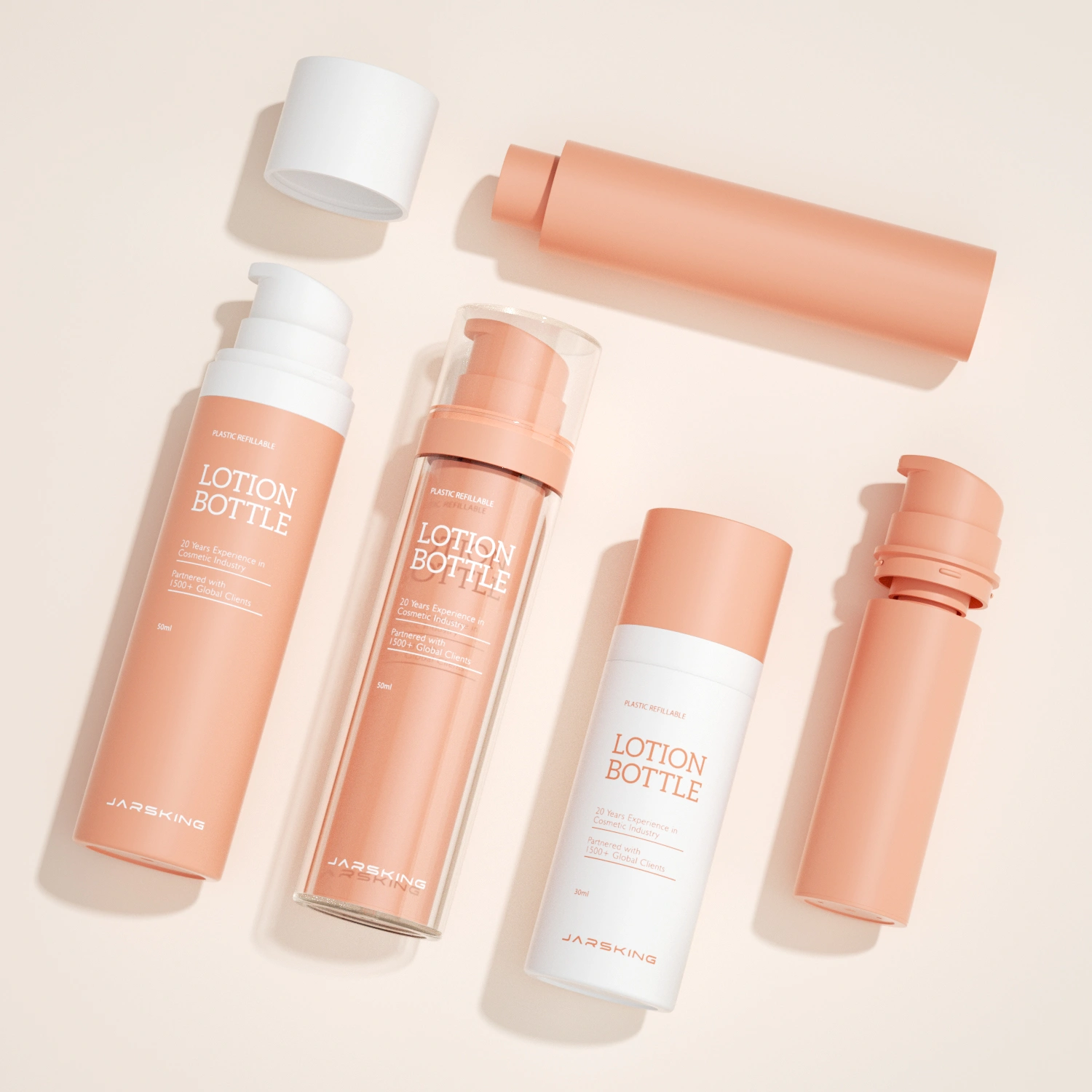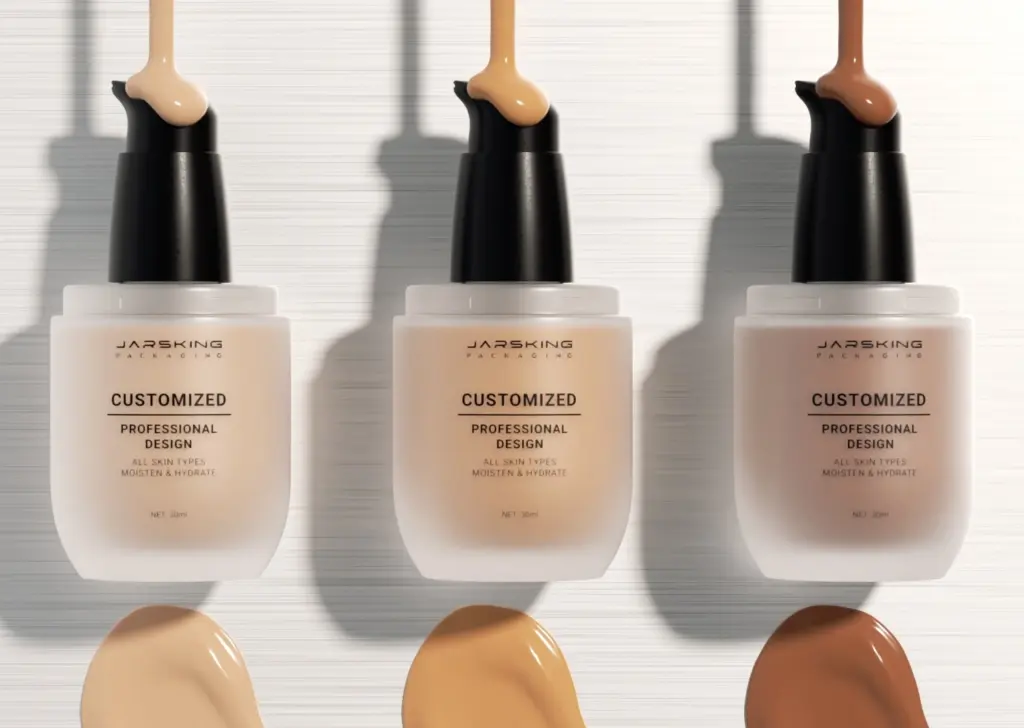In today’s beauty industry, Environmental, Social, and Governance (ESG) considerations have become crucial factors influencing packaging decisions. As consumer awareness grows and regulatory pressures increase, cosmetic companies are reimagining their packaging strategies to align with sustainability goals while maintaining functionality and appeal. This article explores the multifaceted importance of ESG in cosmetic packaging, examining environmental impacts, social considerations, governance frameworks, and the business benefits of adopting sustainable practices.
Introduction
The cosmetics industry represents a significant economic sector with projected growth in the coming years, accompanied by an increasing trend toward sustainable products and packaging options. Consumer preferences are evolving rapidly, with a growing segment of shoppers willing to go out of their way to purchase products in eco-friendly packaging. In fact, studies show that approximately 65% of global consumers actively seek products with sustainable packaging. This shift in consumer behavior is driving brands to reconsider their packaging choices, not just as a matter of environmental responsibility but as a crucial business strategy. This packaging crisis has prompted a shift in how beauty brands approach their packaging decisions, with ESG principles becoming central to strategy development.
The business case for integrating ESG considerations into cosmetic packaging decisions is compelling. Beyond meeting consumer expectations and regulatory requirements, sustainable packaging can drive innovation, enhance brand reputation, and create long-term value. Companies that prioritize sustainability in their packaging choices often find themselves better positioned to navigate the changing marketplace and build stronger connections with their increasingly eco-conscious customer base.
As we delve into the various dimensions of ESG in cosmetic packaging, it becomes clear that this is not merely a passing trend but a fundamental transformation of the industry’s approach to product presentation and environmental stewardship.
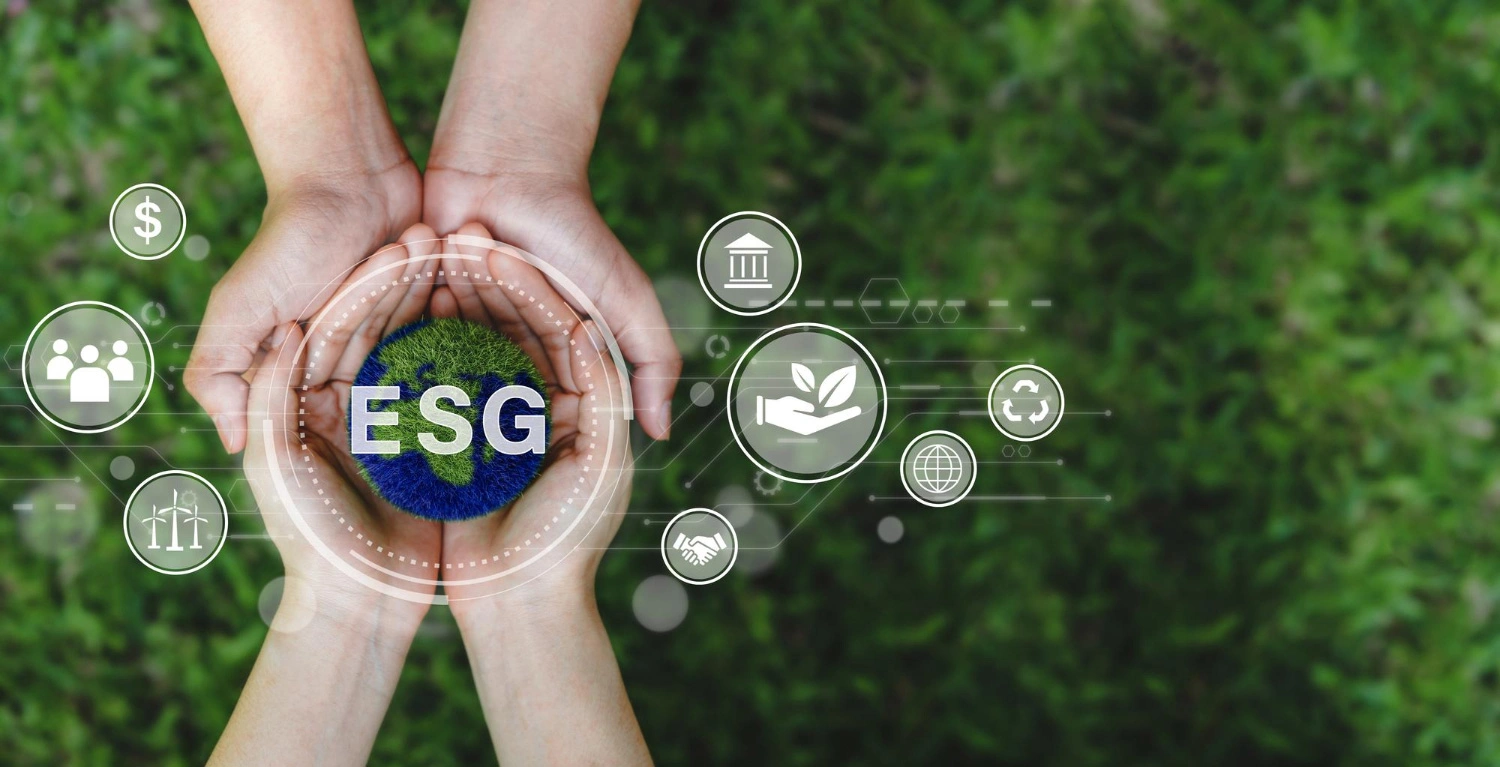
The Environmental Dimension of Cosmetic Packaging
Current Environmental Challenges
The environmental impact of traditional cosmetic packaging is substantial and multifaceted. Plastic waste, in particular, poses a significant challenge, with many cosmetic containers contributing to the global plastic pollution crisis. Traditional packaging materials often rely on virgin plastics derived from fossil fuels, contributing to resource depletion and greenhouse gas emissions.
A critical aspect of packaging sustainability that often goes overlooked is the amount of product residue left in emptied containers. Research shows that different packaging systems retain varying amounts of product residue, with some pump dispensers leaving up to 26% of the product unused. This not only represents economic losses for consumers but also contributes to environmental waste and negatively impacts the recyclability of packaging materials.
The carbon footprint associated with cosmetic packaging extends beyond the materials themselves to include manufacturing processes, transportation, and end-of-life disposal. When comparing different packaging materials, glass has been found to have a greater environmental impact due to its energy-intensive production process and heavier weight, which affects transportation emissions. For instance, a 100 ml glass container weighing 196 g has significantly higher carbon emissions compared to a 100 ml PET container weighing just 16.4 g or a 100 ml HDPE container weighing 14.2 g.
Sustainable Materials Revolution
The quest for more environmentally friendly packaging has sparked a revolution in materials science, with numerous alternatives emerging to replace traditional plastics. Post-Consumer Recycled (PCR) materials have become increasingly popular, with many brands now ensuring that their plastic packaging contains at least 50% PCR content. This shift reduces the demand for virgin plastics and helps divert waste from landfills.
Biodegradable and compostable materials represent another frontier in sustainable packaging. Materials such as polylactic acid (PLA) and wood-polymer composites (WPC) have shown promise as alternatives to conventional plastics. Research indicates that these materials can reduce lifecycle impact by 18-30% and end-of-life impact by 26-42% compared to traditional plastics like acrylonitrile butadiene styrene (ABS).
Innovative alternative materials are also gaining traction in the cosmetics industry. Mycelium packaging, derived from the root structure of fungi, offers a completely biodegradable solution that can be molded into various shapes and composted after use. This material not only provides functional protection for cosmetic products but also serves as a positive brand image booster due to its innovative and eco-friendly nature.
Glass and metal containers continue to be popular choices for sustainable packaging due to their recyclability and durability. Glass is infinitely recyclable without loss of quality, while metals like aluminum can be easily recycled and have a long shelf life. However, the environmental impact of these materials must be considered holistically, taking into account factors such as weight, transportation emissions, and energy requirements for production and recycling.
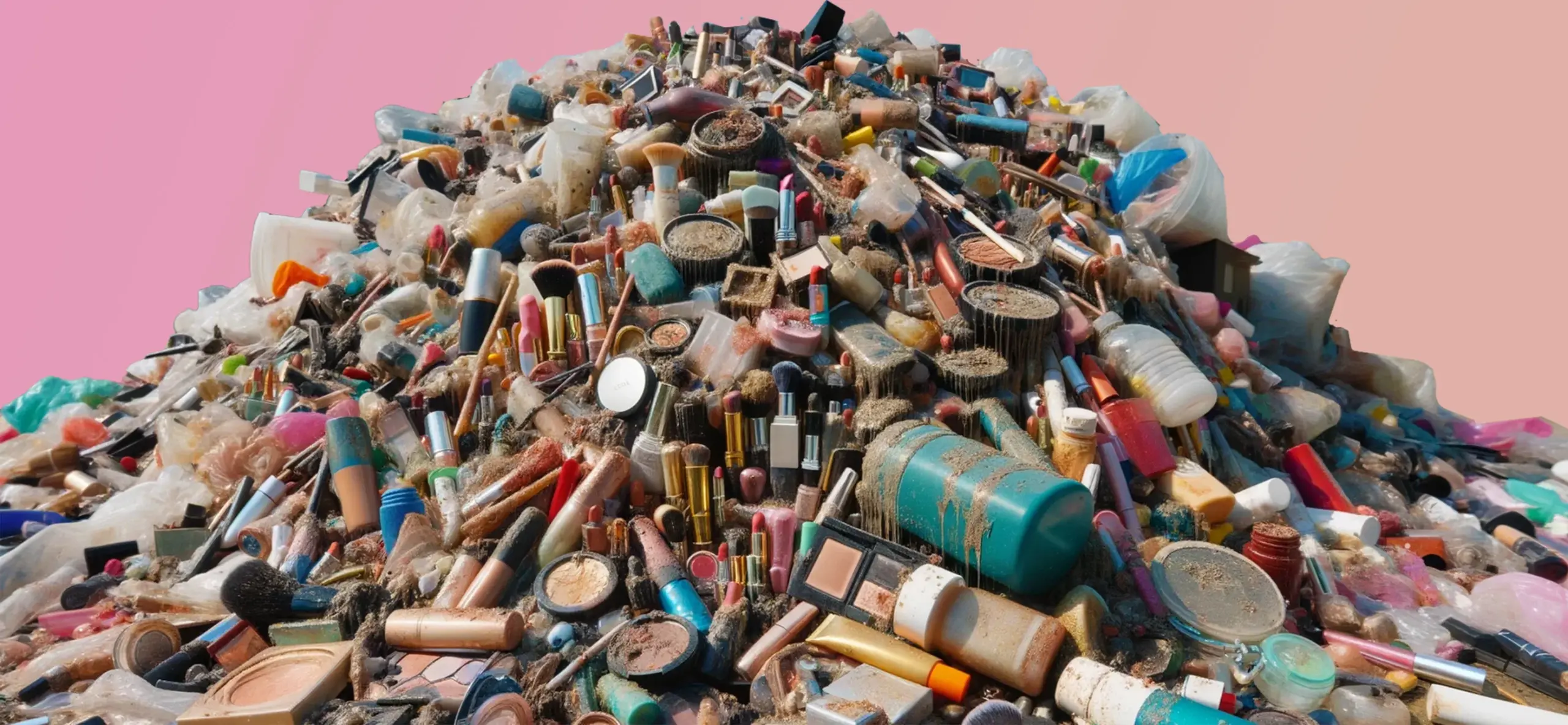
Design Strategies for Environmental Impact Reduction
Minimalist packaging approaches have gained popularity as brands seek to reduce material usage without compromising product protection or aesthetic appeal. By eliminating unnecessary layers, inserts, and components, companies can significantly reduce their environmental footprint while creating sleek, modern designs that appeal to eco-conscious consumers.
Weight reduction techniques represent another important strategy for minimizing environmental impact. Lighter packaging requires less material and energy to produce and transport, resulting in lower carbon emissions throughout the product lifecycle. For example, reducing the weight of a glass container or switching to lighter materials like aluminum or certain bioplastics can yield substantial environmental benefits.
Refillable and rechargeable packaging systems are revolutionizing the way consumers interact with their beauty products. By designing containers that can be refilled rather than discarded after a single use, brands can dramatically reduce packaging waste while fostering customer loyalty. Luxury and indie brands alike are adopting refill systems for products ranging from foundations and lipsticks to skincare jars, demonstrating that sustainability and premium experiences can go hand in hand.
Airless pump technology represents a significant advancement in sustainable packaging design. These systems extend product shelf life by preventing exposure to air and contaminants, reducing the need for preservatives while ensuring that consumers can access nearly all of the product. Studies show that airless pump dispensers can retain less than 1% of product residues for certain formulations, compared to up to 26% for conventional pump dispensers, significantly reducing product waste.
Measuring Environmental Performance
Life cycle assessment (LCA) methodologies provide a comprehensive framework for evaluating the environmental impact of packaging throughout its entire lifecycle, from raw material extraction to end-of-life disposal. These assessments consider multiple environmental indicators, including carbon footprint, water usage, and waste generation, offering a holistic view of a packaging solution’s sustainability profile.
Carbon footprint calculation has become a standard practice for companies seeking to quantify and reduce their environmental impact. By measuring the greenhouse gas emissions associated with different packaging options, brands can make informed decisions that align with their sustainability goals. This approach considers emissions from raw material extraction, manufacturing, transportation, use, and disposal, providing a complete picture of a packaging solution’s climate impact.
Waste reduction measurement allows companies to track their progress in minimizing packaging waste and implementing circular economy principles. This includes monitoring the amount of material used per unit of product, the percentage of recycled content in packaging, and the recyclability or biodegradability of packaging components. By setting specific waste reduction targets and regularly measuring performance against these benchmarks, brands can demonstrate their commitment to environmental stewardship.
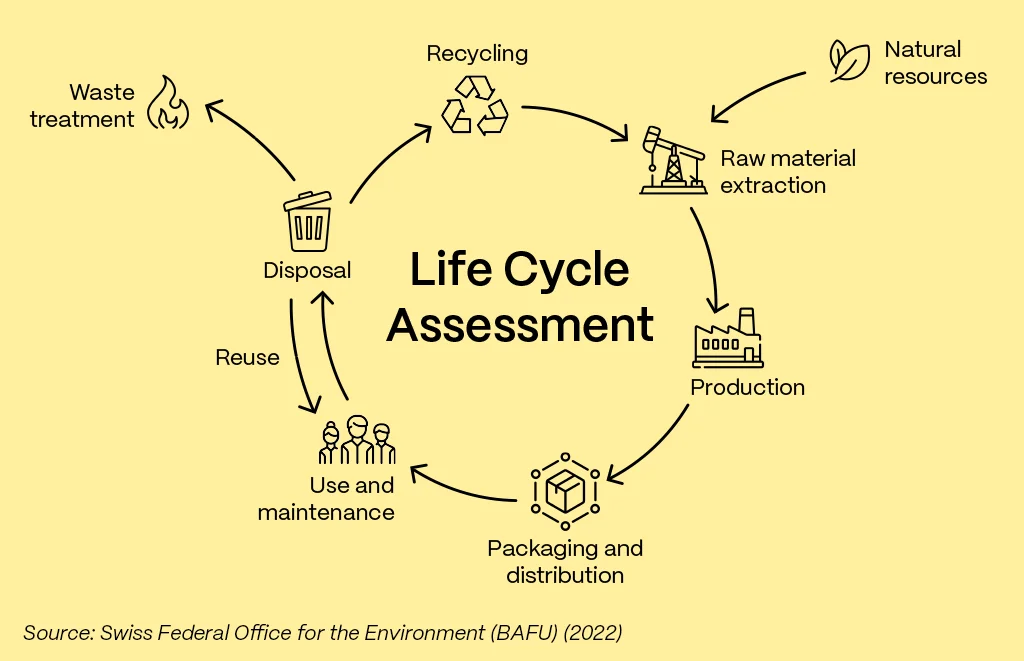
ESG Applications in Cosmetic Brand Packaging: Leading Examples and Innovations
The cosmetics industry is witnessing a significant transformation as brands increasingly integrate ESG principles into their packaging strategies. This section explores how various cosmetic companies are implementing sustainable packaging solutions, highlighting innovative approaches and measurable impacts.
Pioneering Brands in Sustainable Packaging
• Estée Lauder Companies: Comprehensive ESG Strategy
Estée Lauder has made environmental sustainability a key pillar of its business operations, with ambitious commitments to increase the amount of post-consumer recycled (PCR) material in its packaging by up to 50% by 2025. The company’s approach includes removing unnecessary packaging components and transitioning to recyclable bioplastics across its product lines.
The Aveda brand, part of the Estée Lauder Companies, demonstrates particular leadership in sustainable packaging. As the first beauty company to adopt post-consumer-recycled packaging, Aveda now ensures that approximately 90% of its high-density polyethylene (HDPE) plastic bottles contain a minimum of 80% PCR content. Additionally, Aveda produces its products entirely with solar and wind energy, holding both a “Leaping Bunny” certificate for cruelty-free practices and B Corp Certification, showcasing its holistic approach to sustainability.
• Seed Phytonutrients: Revolutionary Paper Packaging
Seed Phytonutrients has made headlines with its innovative shower-friendly paper bottles. These containers are made from 100% post-consumer recycled paper with a post-consumer recycled plastic liner, resulting in a 60% reduction in plastic compared to traditional bottles. This groundbreaking approach not only reduces plastic usage but also creates a distinctive brand identity that resonates with environmentally conscious consumers. The packaging is fully recyclable after use, setting a new benchmark for sustainable packaging design in the skincare industry.
• Ethique: Plastic-Free Solid Products
Ethique has eliminated plastic packaging entirely for their solid shampoo and conditioner bars, using biodegradable cardboard instead. This approach represents a radical reimagining of product formulation to eliminate the need for conventional packaging. By converting traditional liquid products into solid formats, Ethique has prevented more than 20 million plastic bottles from being manufactured and disposed of. Their innovative approach demonstrates how reformulating products can be a powerful strategy for reducing packaging waste.
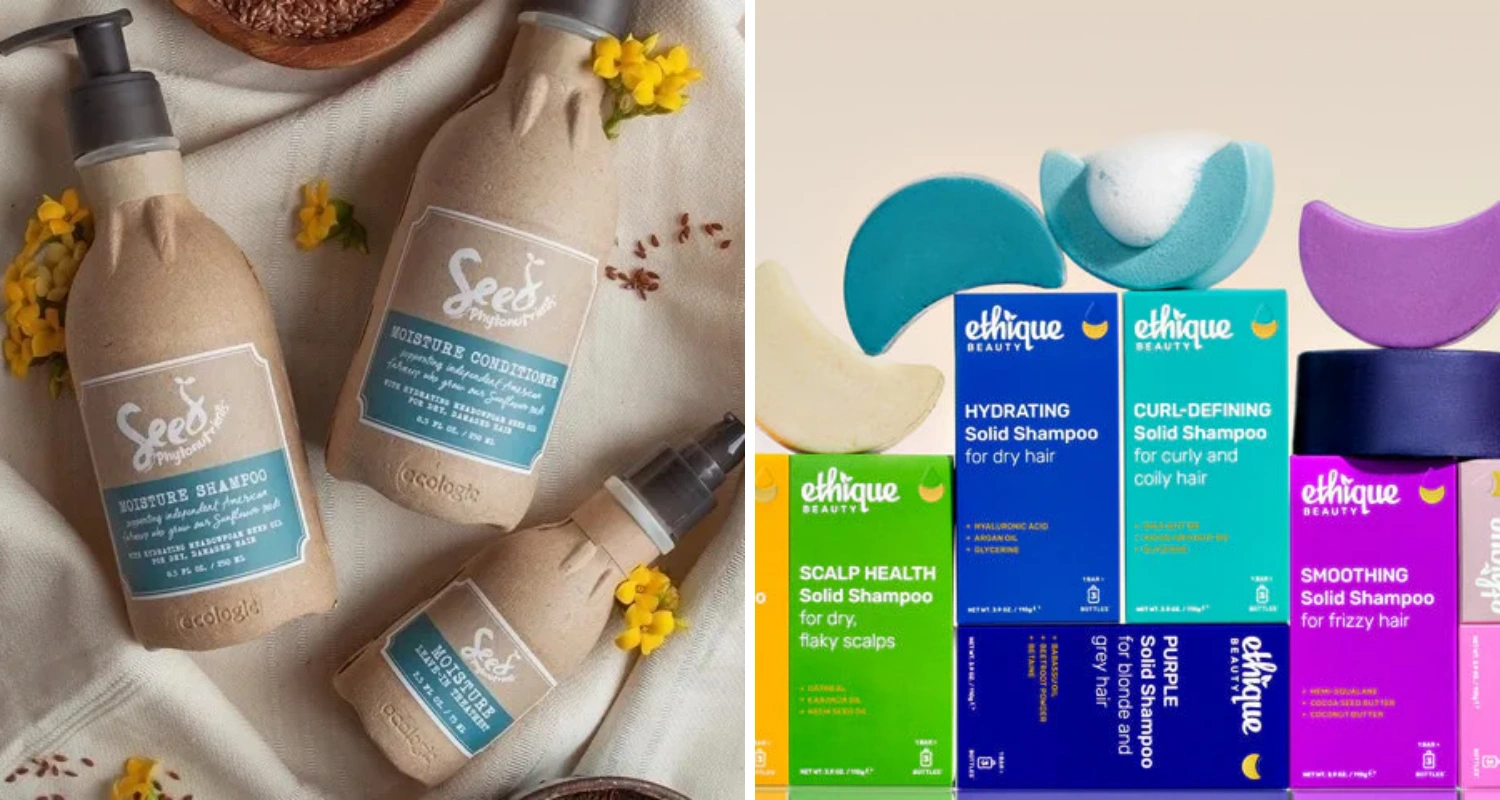
Bio-Based Packaging Innovations
• Bamboo Packaging Solutions
Bamboo has emerged as a popular sustainable packaging material in the cosmetics industry. Brands like Zao Organic Makeup’s bamboo packaging is a hallmark of its eco-conscious approach to beauty. Crafted from sustainably sourced bamboo grown in China’s Wuyishan region—far from panda habitats and using species they don’t consume—the packaging is not only biodegradable but also refillable, allowing customers to reuse the elegant bamboo cases rather than discard them. Zao has developed custom tools to process bamboo locally, minimizing environmental impact, and has introduced initiatives like the Eco-Box return program to ensure used refills are properly recycled.
• Corn-Based Bioplastics
Polylactic acid (PLA) derived from cornstarch is increasingly used for jars, bottles, and film wraps in cosmetic packaging. This material is compostable under industrial conditions and offers a renewable alternative to petroleum-based plastics. The production of PLA generates fewer greenhouse gases compared to conventional plastics, making it an attractive option for brands looking to reduce their carbon footprint.
• Sugarcane-Based Plastics
Bio-PE and Bio-PET derived from sugarcane ethanol represent renewable alternatives to conventional plastics. These materials maintain similar performance characteristics to traditional plastics while reducing reliance on fossil fuels. Several cosmetic brands have adopted these materials for bottles and tubes, particularly for products with high moisture content that require more durable packaging solutions.
Innovative Approaches to Sustainable Packaging
• Plantable Packaging
Pangea Organics has created innovative packaging for their bar soaps using recycled newspaper and water to mold fiber boxes with tree seeds mixed in. After using the product, customers can actually plant the packaging to grow trees. This creative approach not only eliminates waste but transforms packaging into something beneficial for the environment. Similarly, L’Occitane has implemented plantable cartons for their gift sets, offering customers a unique and engaging experience while reducing waste.
• Water-Soluble Packaging
Notpla offers water-soluble sachets made from seaweed, which are ideal for single-use products like face masks or serums. These sachets dissolve completely in water, leaving no waste behind. This innovation addresses the significant environmental challenge posed by single-use packaging in the cosmetics industry, particularly for sample-sized products and travel kits.
• Biolithe Coating Technology
Dr. Idriss Skincare Products has incorporated innovative Biolithe coating on their cartons to fight global warming. This technology represents how brands can go beyond basic recycled materials to incorporate active environmental benefits into their packaging. The Biolithe symbol is prominently displayed alongside other sustainability indicators to communicate this commitment to consumers, demonstrating how packaging can actively contribute to environmental solutions rather than simply reducing harm.
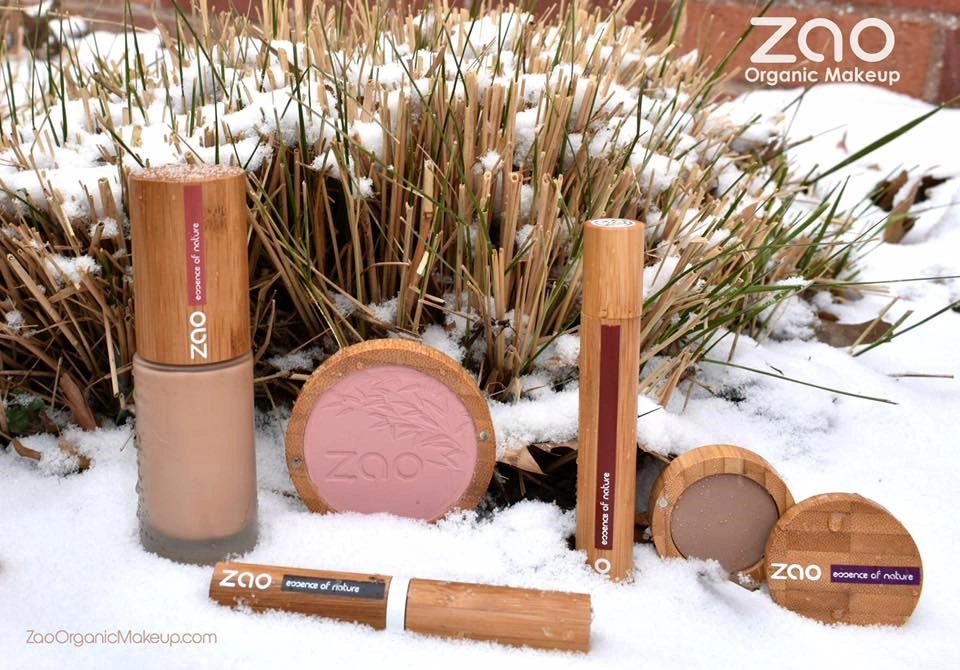
Specialized Packaging Components
• Virospack: Eco-Friendly Dropper Solutions
Virospack has demonstrated its commitment to sustainability through eco-friendly recycled glass and recyclable plastic materials for its dropper packaging solutions. By focusing on a specific packaging component that is widely used in skincare, Virospack shows how specialized packaging suppliers can contribute to the overall sustainability of finished products. Their innovations include droppers with wooden components from certified sustainable forests and recyclable plastic parts, addressing the challenge of making complex packaging components more sustainable.
• Viva: ESG-Enhanced Packaging Partner
Viva offers beauty brands a tangible opportunity to enhance their ESG profiles through sustainable packaging partnerships. Their approach emphasizes how choosing the right packaging supplier can contribute significantly to a brand’s environmental responsibility goals. By providing comprehensive sustainability data and certifications for their packaging solutions, Viva enables brands to make informed choices and accurately report on the environmental impact of their packaging.
Minimalist and Refillable Systems
• Kjaer Weis: Luxury Refillable System
Kjaer Weis has developed refillable makeup compacts that combine luxury aesthetics with sustainability. Their system features durable, high-quality metal compacts designed to be kept and refilled multiple times. The refills come in minimal, recyclable packaging, significantly reducing waste compared to traditional luxury cosmetics packaging. This approach helps build customer loyalty through extended use while reducing the environmental impact of premium beauty products.
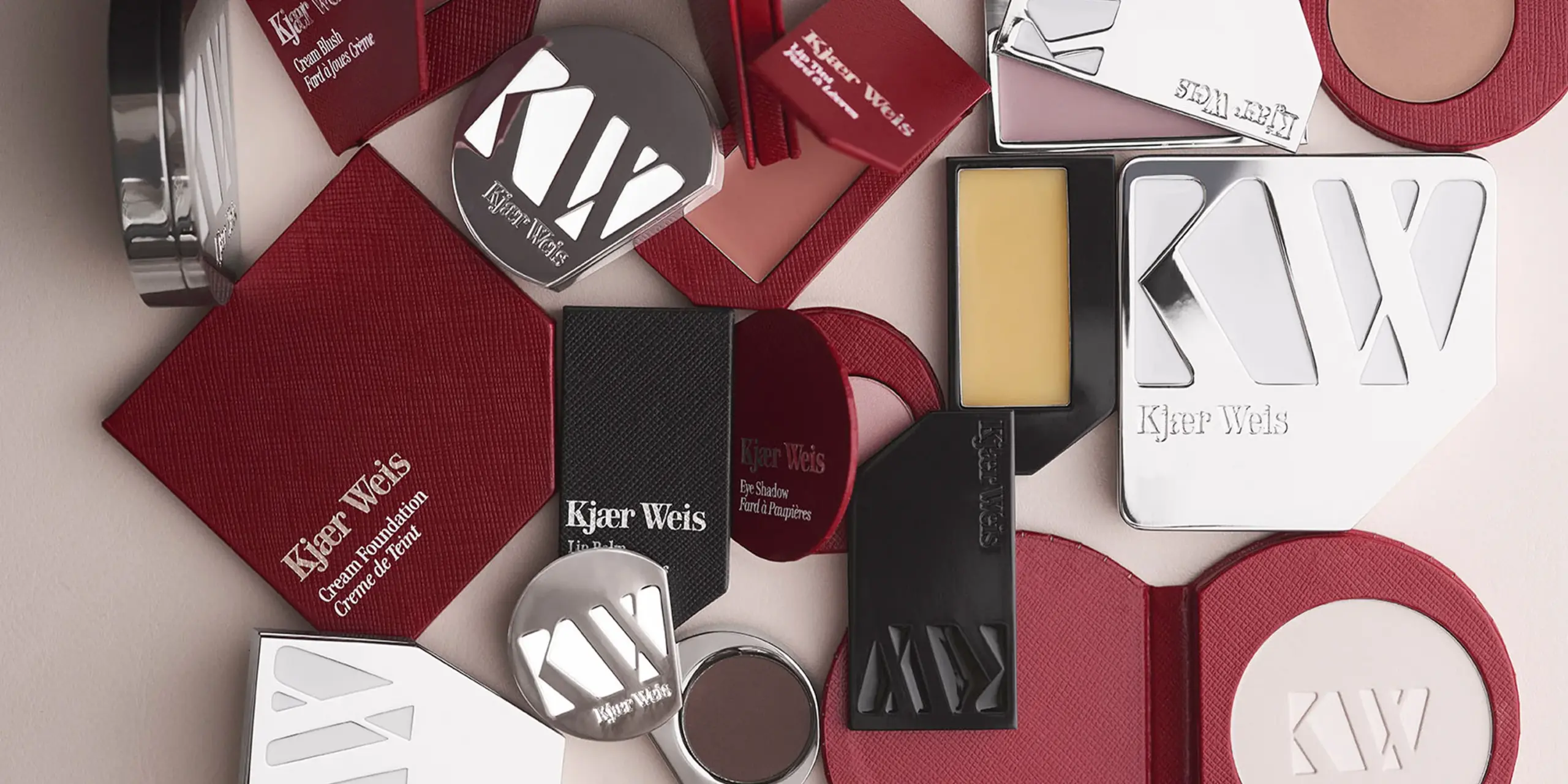
Corporate ESG Commitments and Reporting
• Baralan: Comprehensive ESG Reporting
Baralan released its first ESG Report at Cosmoprof Worldwide Bologna 2025, outlining the company’s commitment to environmental, social, and governance principles. The report details Baralan’s plans to enhance the recyclability of its packaging by reducing waste, increasing the use of recycled materials, and implementing innovative design techniques to minimize packaging weight. With operations in over 60 countries, Baralan is addressing key challenges such as climate change, responsible sourcing, and sustainable packaging practices through continued investment in advanced technologies and sustainable manufacturing processes.
In conjunction with their ESG Report, Baralan launched a new range of primary packaging products that combine tradition with innovation, including monomaterial solutions designed to streamline recycling and promote a circular economy. These developments demonstrate how packaging suppliers are increasingly integrating ESG principles into their product offerings, enabling cosmetic brands to make more sustainable choices.
• Albéa Cosmetics & Fragrance: Measurable Environmental Impact
Albéa has achieved a 38% reduction in CO2 emissions since 2019 and has pledged to design all new products with sustainability as a core principle, aligning with the Ellen MacArthur Foundation’s New Plastics Economy Global Commitment. Their Curl’s Collection for mascaras is made with up to 60% PCR (Post-Consumer Recycled) content and features brushes that combine diverse fibers including cotton, showcasing how sustainability can be integrated into even the most technically challenging packaging components.
• ASME Packaging: ESG-Driven Innovation
ASME Packaging has prioritized the adoption of biodegradable, recyclable, and reusable materials in its cosmetic packaging solutions. The company has introduced packaging options made from recycled plastics and plant-based materials, significantly reducing environmental impact while maintaining aesthetic appeal and functionality. ASME has also invested in energy-efficient manufacturing technologies to minimize its carbon footprint, utilizing renewable energy sources and optimizing production processes to reduce greenhouse gas emissions.
In addition to environmental initiatives, ASME ensures that all raw materials used in its packaging solutions are sourced ethically and responsibly, working with suppliers who adhere to fair labor practices and environmental standards. The company has implemented robust traceability systems to provide clients with complete transparency regarding the origin and production of their packaging materials, enhancing accountability throughout the supply chain.
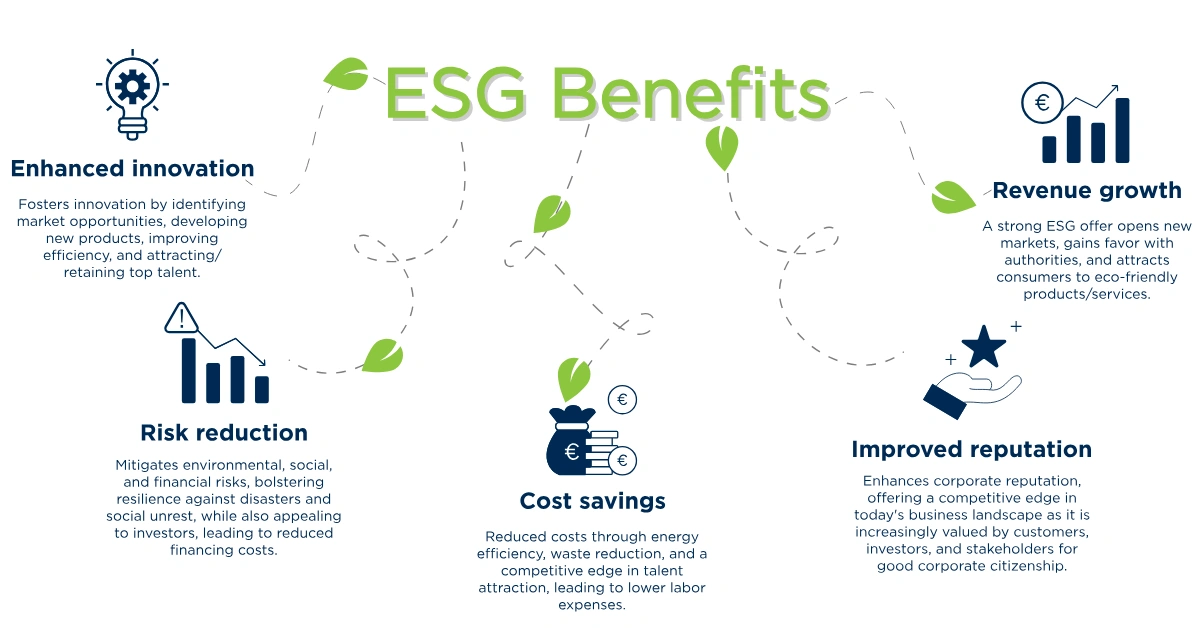
Business Benefits of ESG-Driven Packaging Decisions
Consumer Preference and Market Positioning
Research indicates that more than 75% of US consumers place some level of importance on sustainably packaged cosmetics products. This strong consumer preference creates a significant market opportunity for brands that prioritize sustainable packaging. By adopting ESG-driven packaging strategies, cosmetic companies can differentiate themselves in a crowded marketplace and appeal to environmentally conscious consumers.
Brands that lead in sustainable packaging innovation can capture market share and command premium prices, particularly in the luxury cosmetics segment. The distinctive aesthetic of sustainable packaging, whether through minimalist design, innovative materials, or refillable systems, can become a powerful brand identifier that resonates with consumers.
Cost Optimization Through Sustainability
While sustainable packaging solutions may sometimes require higher initial investments, they often lead to cost savings over time. Minimalist packaging designs reduce material costs, while lightweight packaging lowers shipping expenses. Refillable systems can increase customer lifetime value by encouraging repeat purchases of refills rather than complete products.
Energy-efficient manufacturing processes contribute to both environmental sustainability and cost savings. By optimizing production processes, using energy-efficient equipment, and transitioning to renewable energy sources, companies can reduce the energy costs associated with packaging production while lowering their carbon footprint.
Risk Mitigation and Regulatory Compliance
Proactive adoption of sustainable packaging helps companies mitigate risks associated with evolving regulations and changing consumer expectations. As governments worldwide implement stricter packaging regulations, companies with established sustainable packaging strategies are better positioned to comply without disruptive changes to their operations.
By anticipating regulatory trends and implementing sustainable solutions ahead of requirements, cosmetic companies can avoid potential fines, taxes, or compliance costs. This forward-thinking approach also protects brand reputation by demonstrating environmental responsibility before it becomes mandatory.
Innovation and Competitive Advantage
ESG considerations are driving innovation in the cosmetics industry, with both international giants like Shiseido and L’Oréal and domestic companies investing in areas like synthetic biology and advanced materials science. This innovation extends to packaging, where the quest for sustainable solutions is generating creative new approaches to product containment and delivery.
Companies that develop pioneering sustainable packaging solutions gain competitive advantages through intellectual property, brand differentiation, and industry leadership. These innovations can influence industry standards and practices, positioning early adopters as thought leaders in sustainability.
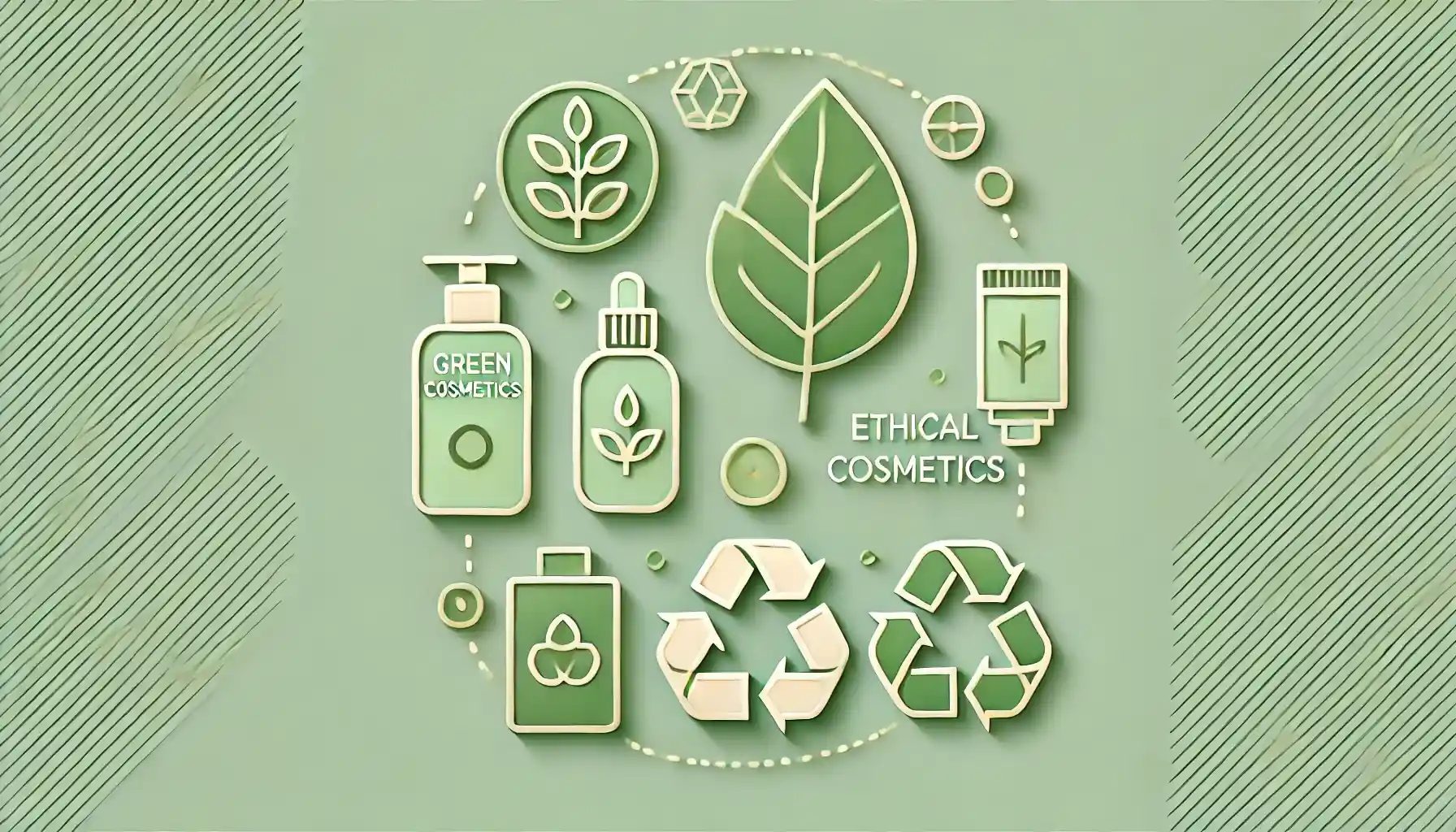
Implementation Strategies for Cosmetic Companies
Assessment and Benchmarking
The first step in developing a sustainable packaging strategy is evaluating the current packaging portfolio. This assessment should include an inventory of all packaging materials, formats, and suppliers, as well as an analysis of environmental impacts, costs, and performance characteristics. By understanding the current state of their packaging, companies can identify priority areas for improvement and establish a baseline for measuring progress.
Competitive analysis of sustainable packaging practices helps companies understand how their packaging compares to industry peers and leaders. This analysis might include reviewing competitors’ packaging materials, designs, sustainability claims, and certifications, as well as monitoring industry trends and innovations. By benchmarking against competitors, companies can identify opportunities for differentiation and improvement in their packaging sustainability.
Phased Implementation Approach
A phased approach to sustainable packaging transition allows companies to make progress while managing costs and operational impacts. This approach might begin with “quick wins” such as weight reduction or increased recycled content, followed by more substantial changes such as material substitution or packaging redesign. By implementing changes in phases, companies can learn from early experiences, build internal support, and manage financial implications effectively.
Many successful brands have adopted this approach, starting with incremental improvements to existing packaging before moving to more radical innovations. For example, a company might first increase the percentage of recycled content in its plastic packaging before eventually transitioning to entirely new materials or refillable systems.
Stakeholder Collaboration
Engaging suppliers in sustainability initiatives is essential for implementing sustainable packaging solutions throughout the supply chain. This engagement might include setting sustainability expectations for suppliers, providing training and resources, collaborating on innovation projects, or recognizing and rewarding suppliers who demonstrate leadership in sustainability.
Industry partnerships and pre-competitive collaboration enable companies to address shared challenges and advance sustainable packaging solutions collectively. These collaborations might focus on developing new materials, improving recycling infrastructure, establishing industry standards, or advocating for supportive policies. By participating in industry initiatives, cosmetic companies can leverage collective expertise and resources to drive systemic change.
Consumer Engagement and Education
Clear communication about sustainable packaging initiatives helps consumers understand and appreciate these efforts. This communication might include information about packaging materials, recyclability, proper disposal methods, and the brand’s sustainability journey. By providing transparent and accessible information, cosmetic companies can empower consumers to align their purchasing decisions with their environmental and social values.
Consumer education about proper disposal and recycling is essential for maximizing the environmental benefits of sustainable packaging. Even the most recyclable packaging will end up in landfills if consumers don’t know how to recycle it correctly. By educating consumers about local recycling systems, material identification, and proper preparation of packaging for recycling, cosmetic companies can help ensure that their sustainability efforts achieve their intended impact.
Conclusion
The integration of ESG principles into cosmetic packaging decisions represents a fundamental shift in how the beauty industry approaches product presentation and environmental responsibility. As we have explored throughout this article, this shift encompasses environmental considerations such as materials selection and design strategies, along with innovative applications being implemented by leading brands across the industry.
Looking to the future, emerging technologies, circular economy models, evolving consumer behaviors, and cross-industry collaborations will continue to shape the landscape of sustainable cosmetic packaging. Companies that stay attuned to these trends and actively participate in shaping them will be well-positioned to lead in the next generation of beauty packaging.
The journey toward truly sustainable cosmetic packaging is ongoing, with challenges and opportunities still to be addressed. However, the direction is clear: ESG considerations are not just nice-to-have elements but essential components of successful packaging strategies in the modern beauty industry. By embracing this reality and taking decisive action, cosmetic companies can create packaging that not only protects and presents their products effectively but also contributes to a more sustainable world.
